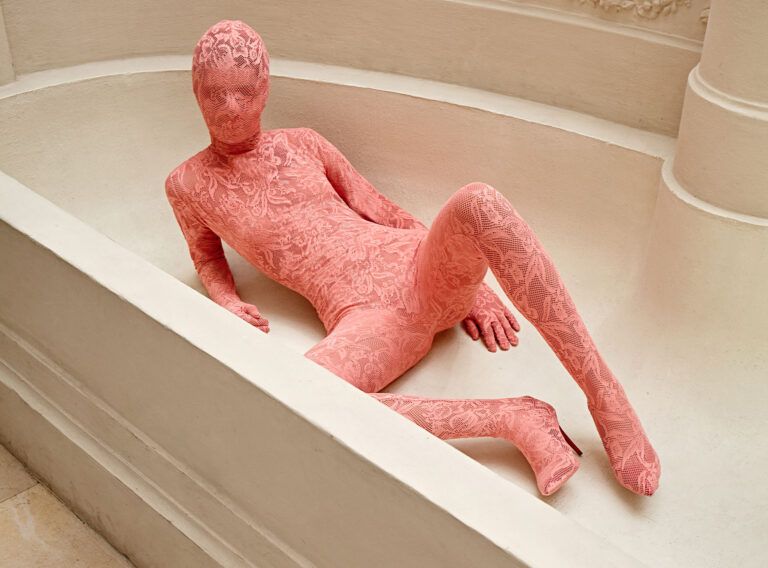Your artworks are known for their vibrant colors and feminine energy. What draws you to these elements and how do they contribute to your work’s overall message or theme?
The colors I work with have been part of my everyday life for a long time. I have long been interested in the theme of femininity. I noticed a while ago that many of my like-minded female friends express themselves in similar colors. I am trying to explore this kind of deeper psychological connection in a playful way.
Sisterhood and self-care motives are recurring themes in your illustrations. Could you share more about the significance of those themes in your art and why they resonate with you?
Like many other women, I have had my share of traumas from childhood and adolescence, but I have not always had the tools or the opportunity to deal with them properly. However, I am realizing again and again how important it is to have a good friend and some drawing tools in my life. It is often a lifesaver if you have no better way to process and understand your emotions.


Some of your illustrations appear like a colorful trip on acid with a feminine pleasant energy. How do these psychedelic elements enhance the visual experience and storytelling in your artwork?
I think these colors have a special ability to build a spiritual and ethereal atmosphere for my artworks. Some soft brushes that I use help me create that vibe too.



Your illustrations often feature girls who resemble fairies. What is the symbolism behind these characters and what do they represent to you?
In my fantasy, every woman has a mystical connection with herself and others. This is the real power in our daily lives. The problem is that many abusive relationships and other destructive situations block that flow of energy. I know that it is difficult to step out from an abusive environment, but we have to find our inner fairies, our inner strength. My characters symbolize this power. When I feel unsure about myself I turn to them for help.


You’ve mentioned on Instagram that to you, drawing is a therapeutic process. Can you elaborate on how art works as therapy and how it influences your creative expression?
As I said earlier, I have had and have situations when I feel very insecure about myself and cannot find a way to step forward. I am a very anxious person with huge ups and downs, but drawing always helps me go back to normal. In a work situation, I am okay if someone tells me what tasks I need to do, but sometimes I really need to create something else to recharge myself.



How do you approach creating your illustrations and what materials or media do you typically work with?
In the last few artworks the only concept was to focus on the new experiences, because I felt stuck in my skills and schemas. Most of the time I choose digital softwares for my works, but I am on my way to return to my sketchbook.
Your illustrations often exude a sense of whimsy and fantasy. How does the element of escapism play into your creative process and the themes you explore in your work?
Well, I don’t think I have fully crafted my art style yet, because when I draw something, I do it with a huge boost, a lot of emotions, and somehow different techniques every time. I feel insecure about that sometimes, but these processes help me to change and grow, so for now I am happy with it!








